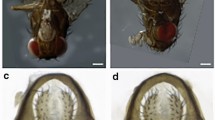Abstract
In the mate-guarding amphipod, Gammarus pulex, the enlarged male posterior gnathopods have been variously suggested to function to grasp and subdue the female, to be used as weapons in fights between males, to signal to the female the male presence and stimulate moult accelaration, egg development or egg extrusion. These hypotheses were tested in a series of experiments, the results of which reveal an unexpected function. Ablation of the posterior gnathopods of males showed that they were neither necessary for, nor advantageous in, establishment and/or maintenance of precopula mate guarding, with or without competition with intact males. Furthermore, these appendages do not function to advance female moult, or stimulate egg development or extrusion. However, only males with intact posterior gnathopods were able to copulate. We also show that females require a full copulation of several bouts to extrude eggs. We conclude that the function of the posterior gnathopods is to facilitate copulation and suggest future studies focus on the selective pressures acting on copulating males.




Similar content being viewed by others
References
Adams J, Greenwood PJ (1983) Why are males bigger than females in precopula pairs of Gammarus pulex? Behav Ecol Sociobiol 13:239–241
Andersson M (1994) Sexual selection. Princeton University Press, New Jersey
Belk D (1984) Antennal appendages and reproductive success in the Anostraca. J Crust Biol 4:66–71
Bertin A, Cézilly F (2005) Density dependent influence of male characters on mate-locating efficiency and pairing success in the waterlouse Asellus aquaticus: an experimental study. J Zool (in press)
Birkhead TR, Clarkson K (1980) Mate selection and precopulatory guarding in Gammarus pulex. Z Tierpsychol 52:365–380
Borowsky B (1984) The use of the males’ gnathopods during precopulation in some gammaridean amphipods. Crustaceana 47:245–250
Clemens HP (1950) Life cycle and ecology of Gammarus fasciatus Say. Contribution no. 12. Ohio State University, Stonelab, OH
Conlon KE (1991) Precopulatory mating behaviour and sexual dimorphism in the amphipod Crustacea. Hydrobiologia 223:255–282
Darwin C (1871) The descent of man and selection in relation to sex. John Murray, London
Dick JTA, Elwood RW (1989) The causal and functional organisation of mating behaviour in Gammarus pulex (Amphipoda). Behav Proc 20:111–124
Dingle H (1983). Strategies in agonistic behavior in crustacea. In: Rebach S, Dunham DW (eds) Studies in adaptation: the behavior of higher crustacea. Wiley, New York, pp 85–111
Dunn AM (1998) The role of calceoli in mate assessment and precopula guarding in Gammarus. Anim Behav 56:1471–1475
Eberhard WG (2002) Physical restraint or stimulation? The function(s) of the modified front legs of male Archisepsis diversiformis (Diptera, Sepsidae). J Insect Behav 15:831–850
Elwood R, Gibson J, Neil S (1987) The amorous Gammarus: size assortative mating in G. pulex. Anim Behav 35:1–6
Lewbel GS (1978) Sexual dimorphism, and intra-specific aggression, and their relationship to sex ratios in Caprella gorgonian Laubitz and Lewbel (Crustacea: Amphipoda: Caprellidae). J Exp Mar Biol Ecol 33:133–151
Sexton EW (1924) The moulting and growth-stages of Gammarus, with descriptions of the normals and intersexes of G. chevreuxi. J Mar Biol Assoc UK 13:340–396
Sexton EW (1928) On the rearing and breeding of Gammarus in laboratory conditions. J Mar Biol Assoc UK 15:33–55
Thompson DJ, Manning JT (1981) Mate selection by Asellus (Crustacea: Isopoda). Behaviour 78:178–187
Thornhill R, Sauer KP (1991) The notal organ of the scorpionfly (Panorpa vulgaris): An adaptation to coerce mating duration. Behav Ecol 2:156–164
Ward PI (1983) Advantages and disadvantages of large male size for male Gammarus pulex. Behav Ecol Sociobiol 14:69–76
Ward PI (1984a) The effect of male size on mating decisions of Gammarus pulex (Crustacea, Amphipoda). Z Tierpsychol 64:174–184
Ward PI (1984b) Gammarus pulex control their moult timing to secure mates. Anim Behav 32:927
Acknowledgements
This work was supported by a DHFETE studentship awarded to Kevin Daniel Hume. Many thanks to John Berges, Gillian Riddell, Mary Gallagher, Joanne McHugh, Anita Kirkpatrick, Dave Kelly and Stephanie Crean, for help and advice
Author information
Authors and Affiliations
Corresponding author
Additional information
Communicated by P. Blackwell
Rights and permissions
About this article
Cite this article
Hume, K.D., Elwood, R.W., Dick, J.T.A. et al. Sexual dimorphism in amphipods: the role of male posterior gnathopods revealed in Gammarus pulex. Behav Ecol Sociobiol 58, 264–269 (2005). https://doi.org/10.1007/s00265-005-0925-7
Received:
Revised:
Accepted:
Published:
Issue Date:
DOI: https://doi.org/10.1007/s00265-005-0925-7




